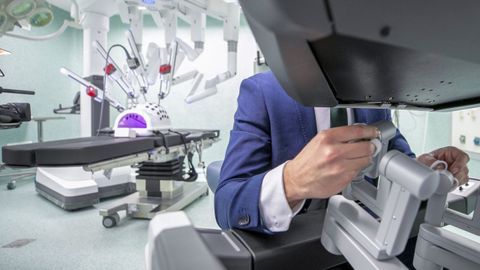
Author: Javier Cebollada | EFE
Sources from the employer attribute this imbalance, worsened after the pandemic, to the fact that the ecological and digital transition requires new worker profiles
Since the outbreak of the pandemic, companies, especially those in the technology sector, have noticed a greater difficulty in finding candidates to fill vacant positionsa problem attributed to the mismatch between training, especially university training, and the needs of companies.
Human resources experts agree on pointing to a shortage of STEM professionals — those who have studied science, technology, engineering and math degrees — as the main reason for these difficulties filling certain jobs whose supply has been growing at a faster rate than applicants for them.
However, they also talk about the change, which is still in its infancy, in the labor market as a whole, which has led to a shortage of specialists in sectors that require a lower level of training, such as hotels and restaurants, to a greater turnover on contracts. and employees who assess problems such as telecommuting to accept positions.
Sources from CEOE employers point out that the imbalance also occurs at the European level, because «In the next 5 years, more than 5 million untrained professionals will be needed», although they admit that the situation in Spain is getting worse and that more and more companies are having difficulties in recruiting.
Job offers grow by 12% from 2022
According to the regional director of Adecco, Victor Tataylast February, 194,000 job offers were published in Spain (looking to fill 261,000 vacancies), a figure 12% higher than in the same month in 2022, when the number of offers was reduced to 173,000.
“Despite the fact that the economy is a little cooler, the level of published offers is very high,” says Tatay, who states that “more than 10% of offers are in the commercial field, 9% in engineering, 8% in hospitality, 7% in industry and 6 % in logistics and transportation”. And he indicates that the areas they find difficult to cover are technological and commercial, although he adds that “anything to do with STEM careers are hard to cover positions”.
CEOE sources indicate that the mismatch between training and the company’s needs comes from the ecological and digital transition and the new profiles they require, as well as a failure in the professional orientation of young people.
The regional director of Adecco points out that in 2022 practically all companies had vacancies and that more than half of human resources directors have difficulties in hiring “positions of high responsibility” and those techniques that have to do with professional training (FP), therefore he points out that the new law and dual education as solutions.
In fact, the Director of Communications and Studies InfoJobs, Monica Perezhe points out that the biggest discrepancy between studies and the labor market is in the university environment, while in vocational education there is “complete adjustment”, so he states that “more vocationally trained people are needed”.
Needs beyond STEM careers
Pérez points out that the needs of STEM careers (in English Science, Technology, Engineering and Mathematics) add an “A” in relation to the branch of arts and humanities, and its demand is also growing considering that technological developments require the creation of “more humane tools”.
“Humanities professionals are starting to join sectors that were previously exclusively technological,” summarizes Pérez, although he indicates that “there are still more gaps in the STEM part.”
Likewise, experts point to an increase request for soft skills in candidates, i.e. non-technical skills related to adaptability, teamwork or organization. But outside of training, “there’s a very important part that has to do with attitude and commitment,” he says. Tataywhich also points to a possible mismatch between what companies can offer and what workers are looking for, something that generates more traffic.
Initial changes in the labor market
“The first thing companies have to do is adapt to the moment on the labor market. That is, if you don’t find candidates, you will have to find your life to adapt,” says Tatay, who points out that there are already companies working on their employer image.
Pérez points out that “something changes” after the pandemic, and emphasizes that, although salary is still the key to accepting a job, next in importance is the flexibility to balance work and private lifeBecause you don’t want to “live to work”.
From CEOE They also highlight this change in the labor market and give as an example truck drivers in the transport sector, an occupation that, despite “attractive” salaries, is not in demand because it entails “long absences from home”.
Source: La Vozde Galicia
I am Jason Root, author with 24 Instant News. I specialize in the Economy section, and have been writing for this sector for the past three years. My work focuses on the latest economic developments around the world and how these developments impact businesses and people’s lives. I also write about current trends in economics, business strategies and investments.







